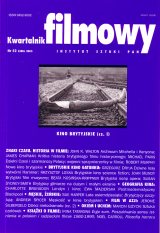Postmodernistyczny Blackpool
Postmodern Blackpool
Author(s): Ewa MazierskaSubject(s): Theatre, Dance, Performing Arts
Published by: Instytut Sztuki Polskiej Akademii Nauk
Keywords: Blackpool; postmodern; city
Summary/Abstract: This essay discusses representation of Blackpool in film as a special case amongst British postmodern cinematic cities. Its postmodernism not only follows the changes which affected the ‘real’ city in the last decades and the postmodern style of the 1980s and 1990s cinema, but to a large extent results from the fact that it was always, in a sense, postmodern. Many of the features associated with postmodernism existed in the city, and were identified by historians before the term ‘postmodernism’ started to be widely used. After presenting a brief history of Blackpool as the most cosmopolitan British holiday resort, patronised mostly by the working classes, the essay explores the shifts in portrayal of Blackpool that took place between 1927 the premiere of a silent box-office hit "Hindle Wakes", directed by Maurice Elvey to "Bhaji on the Beach" (1993), directed by Gurinder Chadha and "Funny Bones" (1994) by Peter Chelsom, through "Sing As We Go" (1934), directed by Basil Dean and "Taste of Honey" (1961) by Tony Richardson, using as the main methodological perspective Jonathan Raban’s concept of a ‘soft city’.
Journal: Kwartalnik Filmowy
- Issue Year: 2005
- Issue No: 52
- Page Range: 168-182
- Page Count: 15
- Language: Polish

